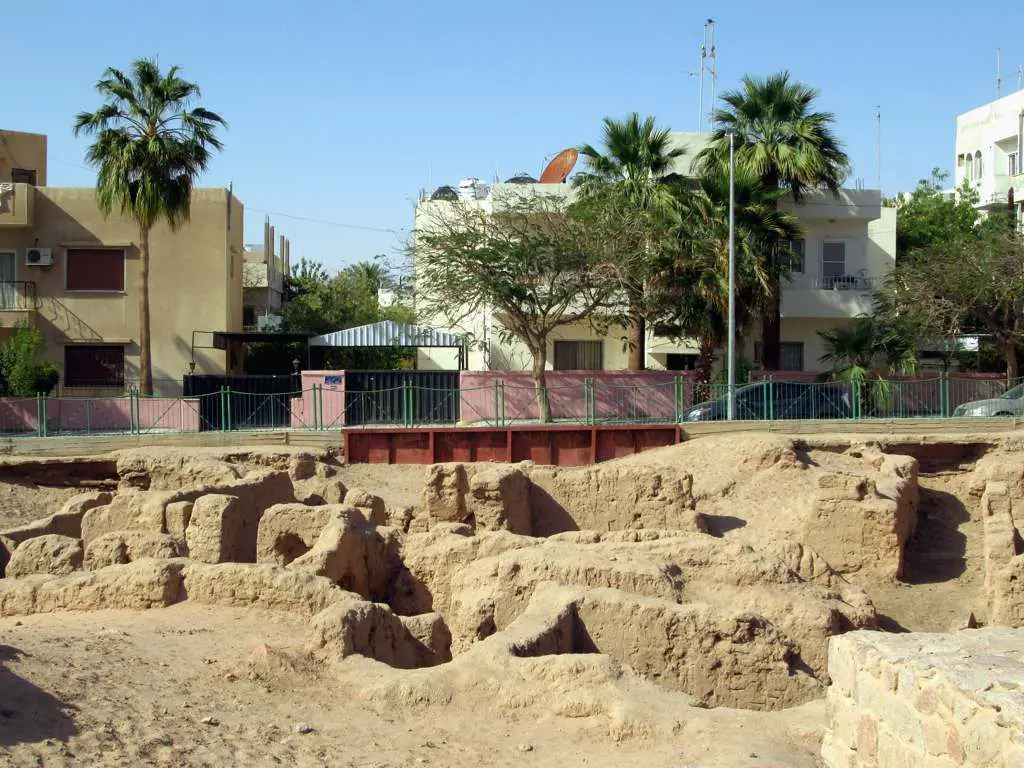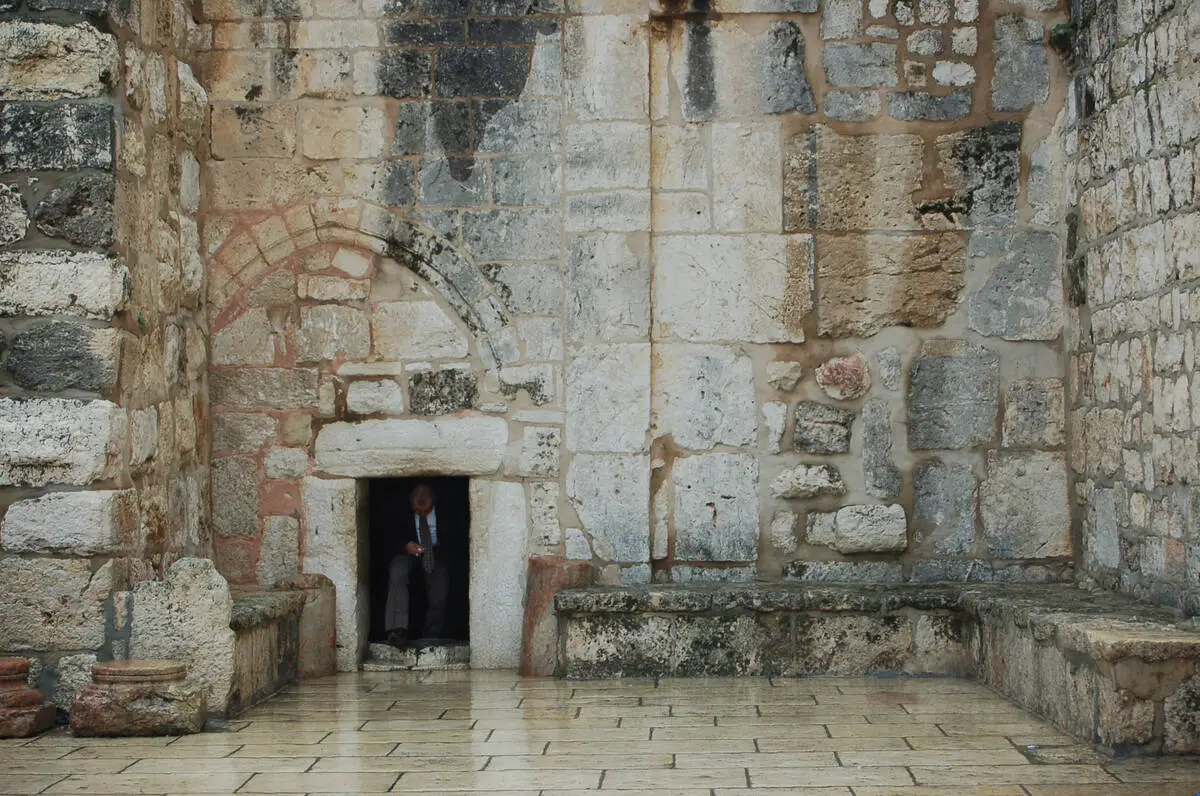Churches 🢔 Religious architecture 🢔 Archaeological wonders 🢔 Categories of wonders
Wonder
Aqaba Church
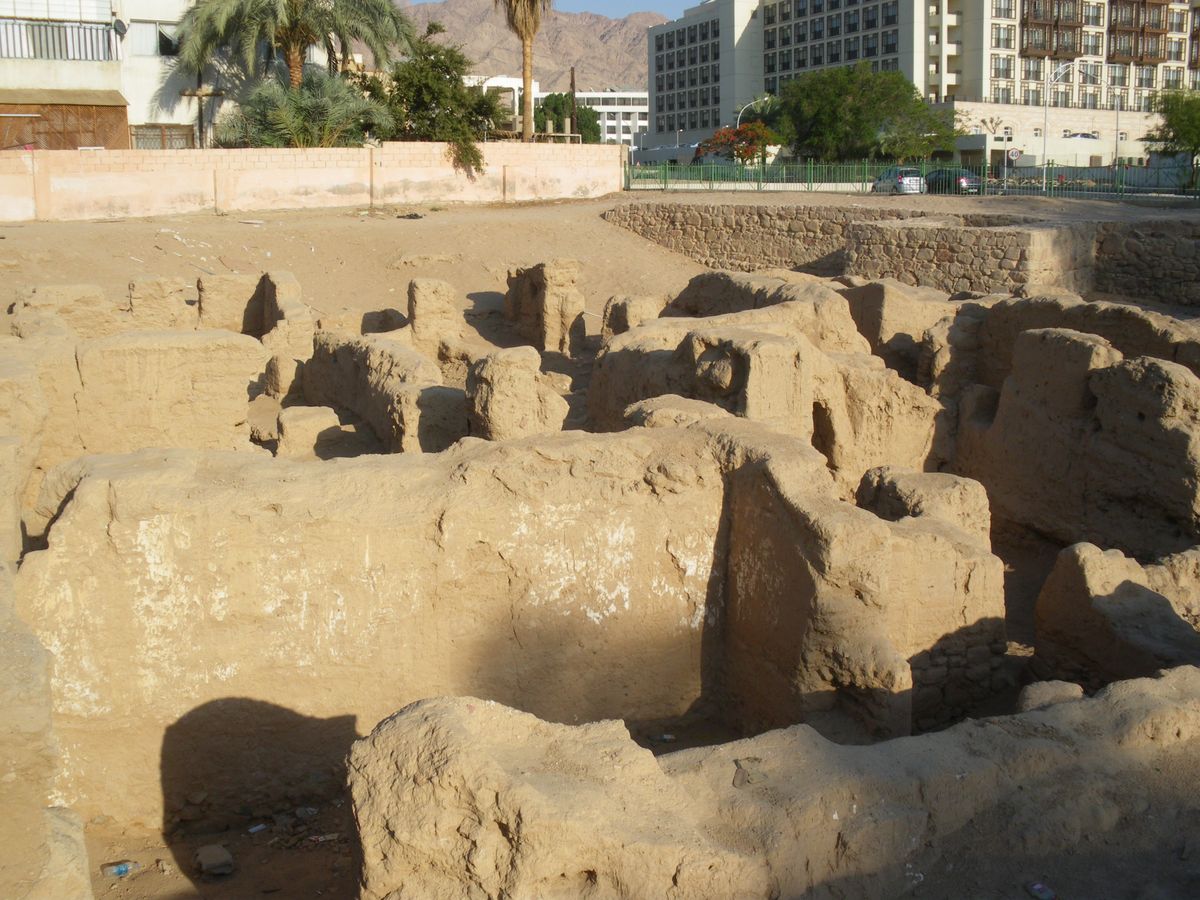
 In short
In short
There are quite a lot of “oldest churches in the world”. But Aqaba Church is the oldest known structure that was built to be a church. Its construction started around 293 – 303 AD.
 36.5%
36.5%
GPS coordinates
Location, address
Time of construction
Map of the site
If you see this after your page is loaded completely, leafletJS files are missing.
 In detail
In detail
Aqaba – the ancient trade city
Similar to most of the settlements in the Near East, the history of Aqaba is millennia-long. Its history may have started some 6000 years ago, during the Chalcolithic (Copper) Age. And this place had its strategic benefits exactly in these times – near it was a find of copper.
Throughout the millennia Aqaba saw rise and fall of importance but starting from the Hellenistic period (around 300 BC) it was an important trade center for the whole region.
This status further strengthened during the Roman times (the direct rule of the Roman Empire was established in 106 AD). At the same time – Aqaba (then named – Aila) was close to the outer borders of the Roman Empire and belonged to the Nabatean sphere of cultural influence.
The church
Roman Aqaba Project
An interesting find was made during the Roman Aqaba Project that was started in 1994. The aim of this project was to find and investigate the Roman Aila City – its location was not clear at that time. The project was organized by the North Carolina State University and led by S. Thomas Parker. Soon archaeologists found interesting walls, that, most likely belonged to a former church and in 1998 they discovered that this church might be the oldest known purpose-built church in the world.
This term is not exactly precise: it is known that churches in the late 3rd century were built in many cities of the Roman East, for example, in Nicomedia – present-day Izmit, Turkey. But these churches, as far as it is known, were completely demolished around 303 – 313 AD and even their traces have not been identified.
There are known older churches, such as Dura-Europos house church (233 AD), but these churches are located in structures that originally were built for other purposes.
Description
Today the only remnants of this church are its walls that rise up to 4.5 m tall.
Church had a basilica planning and eastward orientation. It was quite a large structure: a three-aisled basilica, 26 by 16 m large.
Walls are built from mud-brick and had a colored plaster – there are traces of several colors on it. Doorways in the church were arched, and a fragment of a stairway with seven steps was found. Most likely, stairs were leading to the roof.
One of the most interesting finds inside the church was a large sandstone slab – a purported offering table. There were found also pieces of a glass oil lamp, coins, shards of pottery.
Exactly these pottery shards were crucial to set the age of the structure – pottery often is a very useful find that lets to determine the age.
In one nearby tomb were found also parts of a bronze cross.
What do we know about the history of Aqaba Church?
First – these walls almost certainly belong to a church. Almost certainly – but we are not absolutely sure yet.
Most likely, the construction of this church was a private initiative in a time of relative easing on Christian prosecution. It could be financed by a group of affluent local Christians and constructed sometime between 293 – 303 AD.
This church was sufficient for some 60 worshippers.
In 303 AD the Diocletianic Persecution of Christianity started and lasted some 10 years. At this time the known churches around Roman Empire were demolished and persecutions were especially harsh in the Eastern Provinces.
In Aqaba the church, most likely, was not in use anymore but somehow was not demolished like other churches.
As the persecutions ended, the life in church returned, it was refurbished and extended – now it could accommodate up to 100 worshippers.
It is known that Aqaba sent its representative – bishop of Aila – to the First Council of Nicaea in 325. Thus at that time in Aqaba was a sizeable group of Christians.
The church was in use until 363 AD when it was (most likely) destroyed by an earthquake. In its ruins for a while lived people but gradually the ruins were covered with wind-blown sand and thus preserved until the archaeological finds in the 1990ies. Most likely, more valuable architectural elements of the church were robbed soon after its demise.
References
- S. Thomas Parker, An Early Church, Perhaps the Oldest in the World, Found at Aqaba, Near Eastern Archaeology, Volume 61 No 4, December 1998. Accessed on 27th January 2022.
- S. Thomas Parker, The Roman ‘Aqaba Project: the 2002 campaign, Annual of the Department of Antiquities of Jordan, 2003. Accessed on 27th January 2022.
Aqaba Church is included in the following article:
 Linked articles
Linked articles

Wonders of Jordan
The history of civilization in Jordan goes further back in time than in most other places of the world. As a result, this country has a very rich archaeological heritage which puts in shadow the beautiful monuments of architecture and breathtaking natural scenery of this country.
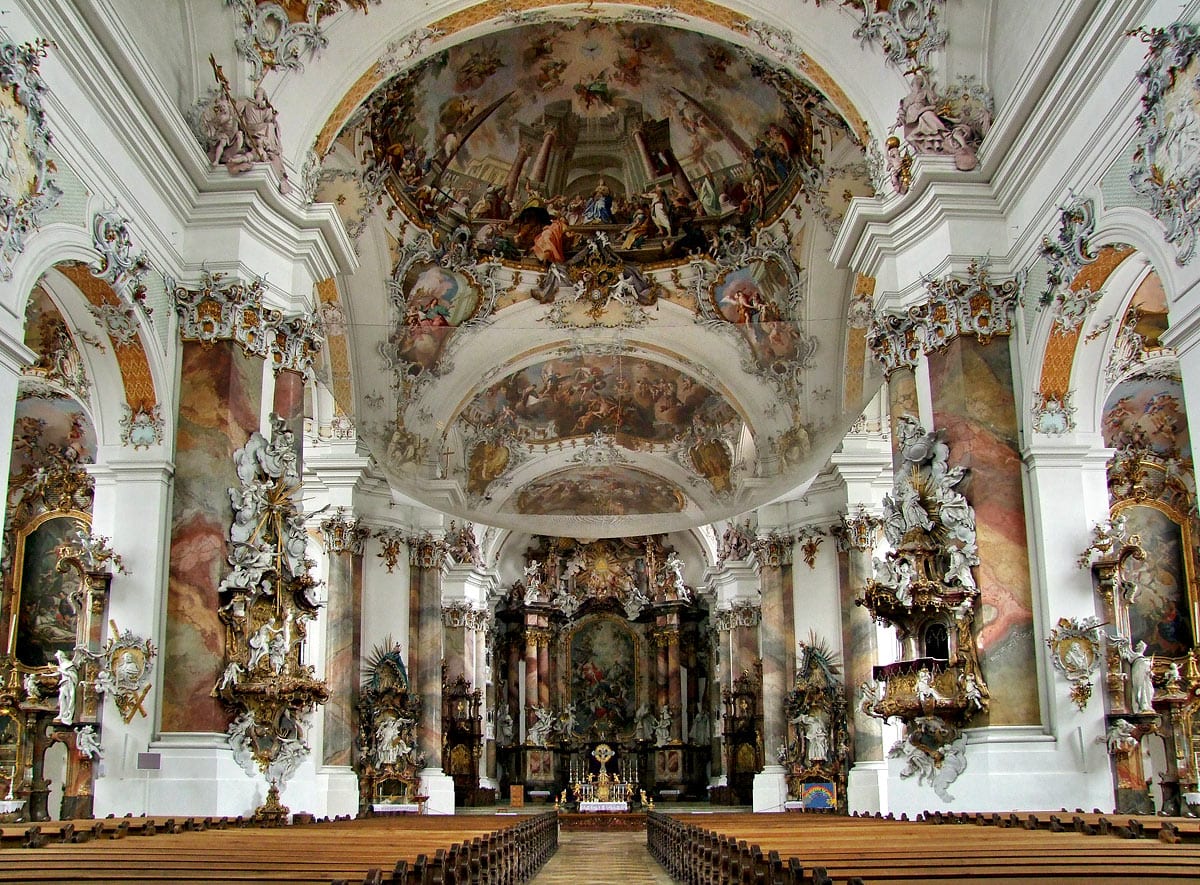
Churches
Throughout the millennia Christian churches have been the epitome of architecture and arts achievements in Western culture.
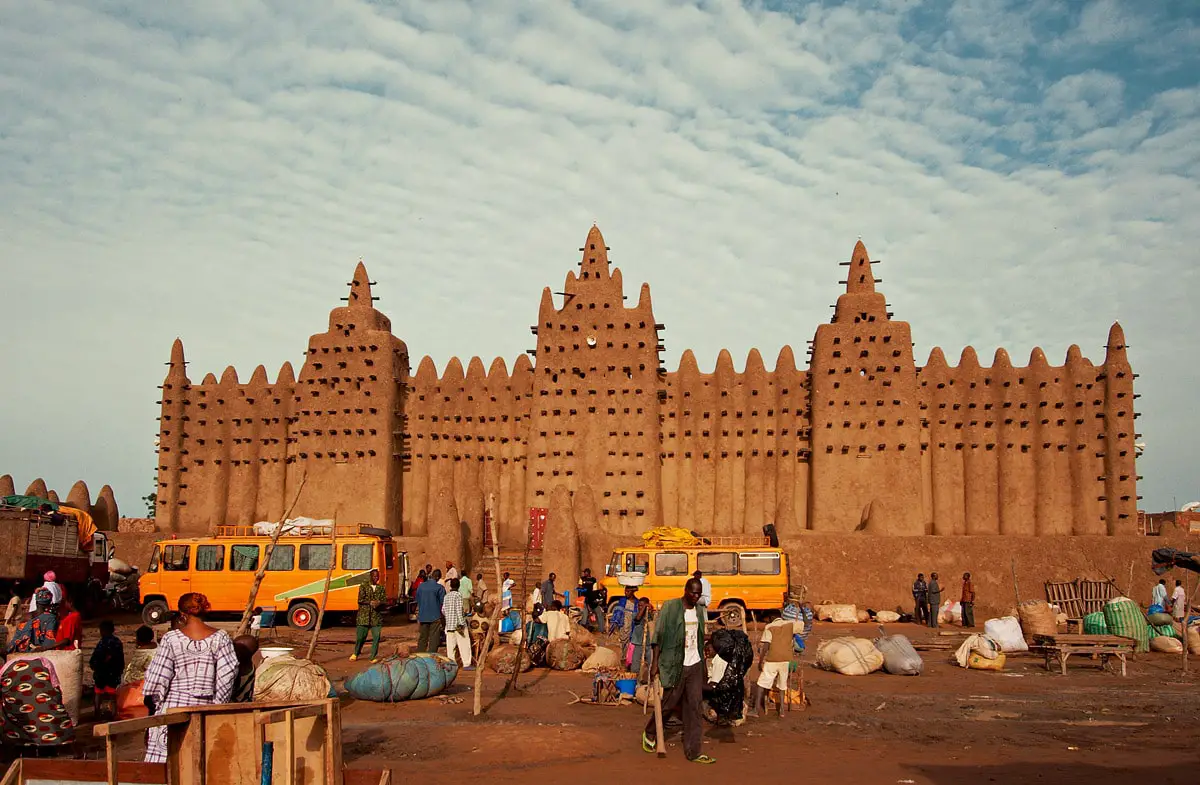
Religious architecture
Since ancient times human talents and skills have been expressed in religious architecture and arts, and traditions and rituals have evolved around pilgrimage sites. Religious buildings represent a major part of the highest achievements in architecture and crafts.
 Recommended books
Recommended books
A History of Aqaba in The Hashemite Kingdom of Jordan
This fascinating book – part memoir, part history – touches on 4,000 years of history as examined through the eyes of an Englishman nurturing the rebirth of Christianity in the Arab world. It also paints colorful pictures of the diverse multitude of locals and seafarers who touched Rev. Laurence’s life during his time in Aqaba, and considers the city’s future as commercialism arrives at this ancient settlement.
Backgrounds of Early Christianity
Having long served as a standard introduction to the world of the early church, Everett Ferguson’s Backgrounds of Early Christianity has been expanded and updated in this third edition. The book explores and unpacks the Roman, Greek, and Jewish political, social, religious, and philosophical backgrounds necessary for a good historical understanding of the New Testament and the early church. New to this edition are revisions of Ferguson’s original material, updated bibliographies, and fresh discussions of first-century social life, of Gnosticism, and of the Dead Sea Scrolls and other Jewish literature.

